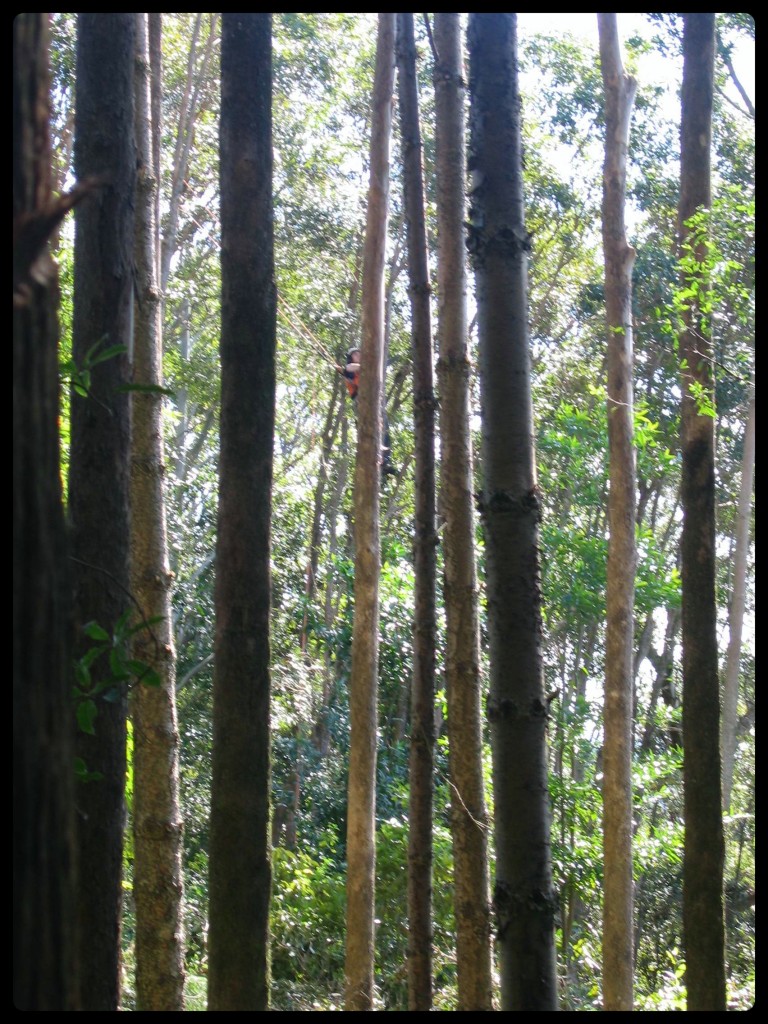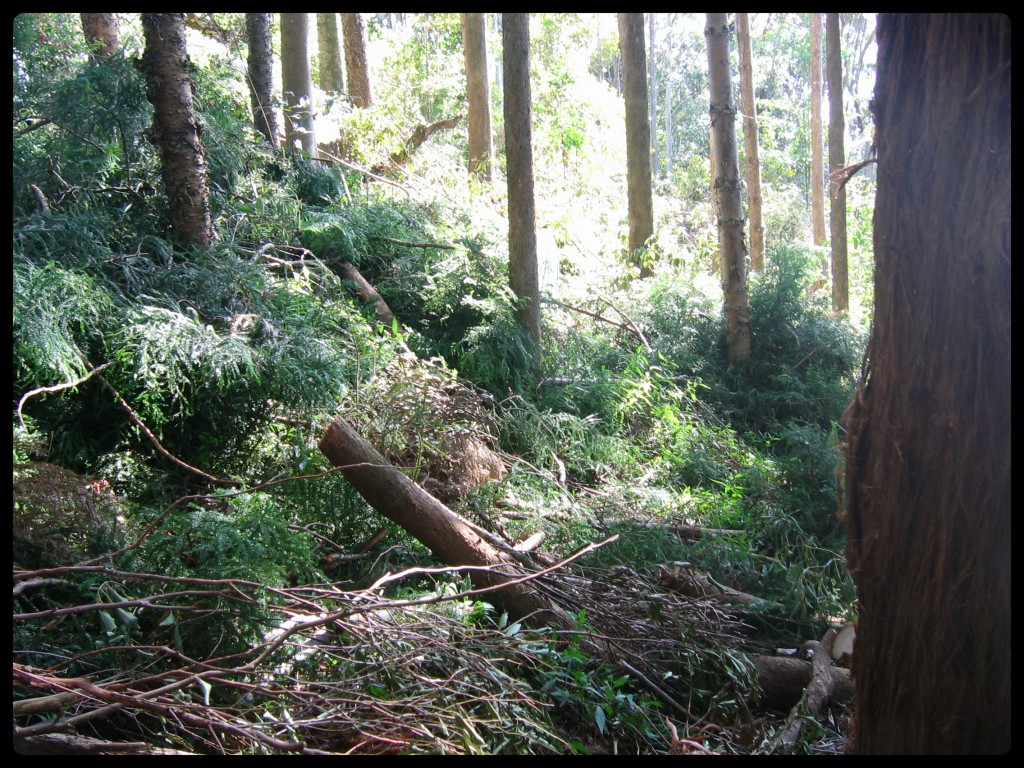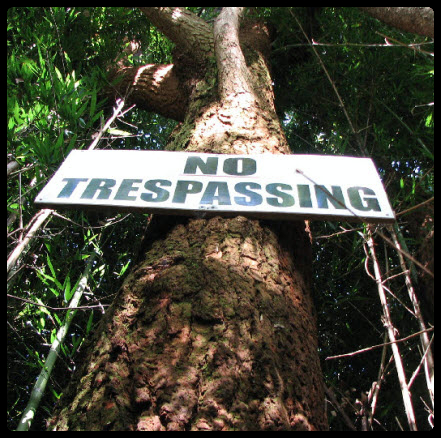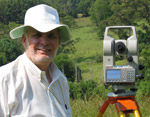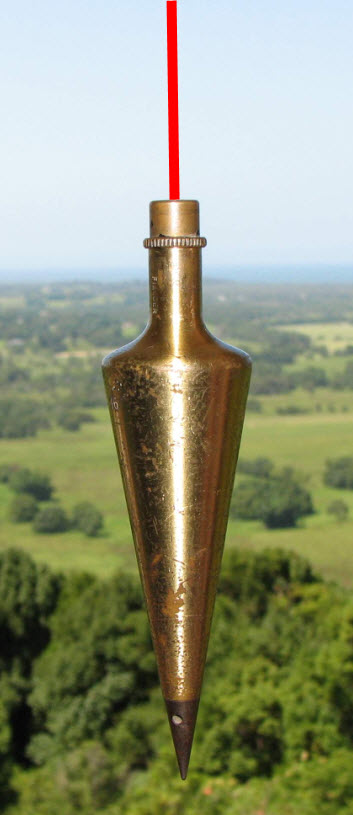Vulnerable escarpment lands under pressure in the Byron Shire, Part 3
Is Environmental Protection a green myth at Coorabell ?
.
Turning healthy mature native trees into poles
.
Extreme branch lopping does not help mature native trees survive
.
More than 30 years to grow and about 60 seconds to cut down
.
Plant trees ~ grow trees ~ protect your trees ~ for the benefit of all
.
What is the primary objective of multiple assaults of tree cutting and tree interference of mature native trees on the same property, on the Coorabell Escarpment, in a 7 (d) Scenic / Escarpment Protection Zone ? In my opinion, simply to attempt to enhance the property’s views for monetary gain.
Between 2008 and 2014, Byron Shire Council has issued the following enforcement penalty orders for the unlawful cutting down of multiple mature native trees on this same property, on different occasions by different owners, at the time. Tree felling on this property was first brought to the attention of Council in 2005.
- 2008 – The unlawful cutting down of 24 mature native trees. Byron Shire Council issued a penalty order to the owner to implement a tree restoration plan, to replant the 24 trees, their ongoing maintenance and noxious weed management.
- 2009 – The extreme lopping and removal of the canopy of approximately 50 mature native trees, and incomprehensibly, no penalty issued by Byron Shire Council. Commented upon and strongly criticized by the Senior Solicitor of the Lismore NSW Environmental Defender’s Office in a letter to Council, dated 15 October 2009.
- 2012 - The unlawful cutting down of 4 mature native trees. Byron Shire Council issued a penalty order to undertake a replanting program which involved the replacement of 50 trees and weed control.
- 2014 – 13 October; Byron Shire Council advises by email that the current owners have accepted responsibility for the unlawful felling of 12 mature native trees on 24 July 2014, and Council has issued a penalty infringement notice of a $1,500 fine. The property owners will also be required to replant and maintain similar trees to those removed. A notation of the Council Order has been placed on Council’s internal Property Register. If the property owners re-offend, Council has indicated that it would issue a Court attendance notice. Provision is also made for the owners, if they so desire, to have this current enforcement penalty referred to and determined by the local court.
Is there a better way of enforcing environmental protection of mature native trees, that are cut down to enhance property views ?
There is a raft of existing, varying and sometimes conflicting legislation, which impacts on enforcement penalties for the cutting down of trees, for the purpose only of obtaining views ( posted 14 December 2014 ). A clear policy determination by Council in this regard, would be helpful to the community and provide a more effective deterrent.
In my experience, orders for replanting and/or the implementing on the ground of a tree restoration plan, have been failures. The proper monitoring, nurturing and maintenance of replaced trees just does not happen. Importantly, the obligation to restore felled trees rests with the owner, and this obligation is extinguished when a property is sold, and does not seem to pass on to the new owner. Additionally, enforcement penalties issued by Council, do not again seem to take into account a previous history of multiple infringements on the same property.
Where trees have been detrimentally interfered with by a previous owner, Council should refuse an application to fell these supposed “sick or dying” trees.
A suggested role for a property Certificate of Title in environmental tree protection.
The act of unlawful tree felling permanently alters the property landscape and recovery to the original status is almost impossible. As an effective deterrent to repeat offenders, it is suggested that an easement on the ground, for the protection of trees and/or a management statement for tree restoration be placed on the notations section of the Certificate of Title of the subject property. This results in enforcement conditions being attached to the property and not being extinguished on change of ownership. An easement for tree protection can be created, together with details as to how it operates, showing the location extent in a Registered Plan of Survey.
The easement or management statement should only be removed when the existing owner demonstrates full compliance with Council directives. These title notifications should not be effected by a change of property ownership and should only be removed on Council’s satisfaction. When a land title’s property search is undertaken, any person can then be immediately made aware of the responsibilities attached to that property. It is common practice for interests to be noted on a Certificate of Title.
____________________________________________________________________________
Robert Crumb’s interpretation sort of says it all !
.
Posted : 20 December 2014
Dear Reader – making representations to the proper authority, being Byron Shire Council, concerning current and repeated offenses with respect to the unlawful felling of mature native trees, has resulted in us being intimidated by Council itself with trivial and largely officious, unenforceable directions. So what’s new. Simply, the shoot the messenger syndrome. Moving at a glacial pace, Byron Shire Council don’t, won’t or can’t answer clear questions put to them by us and on our instructions, by our legal representative. This Council does not seem to recognize that multiple penalized offenses have occurred in the same locality, issuing soft penalties, which have little or no deterrent. From our perspective, in terms of environmental degradation, Byron Shire Council itself, through it’s ineffectual inaction, becomes part of the problem. This Council strongly promotes itself as an environmental local government organization, but does not, in our opinion, walk the talk. In stark comparison, under the current NSW Rural Fires Act, fines of up to $132,000 and a maximum of up to 7 years jail is applicable to offenders who deliberately break the existing fire laws ( Northern Star, 25 October 2014 ). Contrast this with a $1,500 fine for multiple unlawful tree felling for the third separate occasion by different persons. With respect to the aforesaid, Byron Shire Council has never taken these matters to Court.
Additionally, the amenity and quiet enjoyment of our property has been impacted upon us personally by retaliation and malice, resulting from our recent justifiable complaint to Byron Shire Council, concerning the unlawful mature native tree felling on 24 July 2014. It is our view, that Council itself has inflamed this situation.
Community and local government dissatisfaction with the abuse of tree and vegetation clearing rules, which came into use on 1 August 2014, resulted in amendments being made on 27 November 2014 by the NSW Rural Fire Service, while a current overall review is being undertaken.
Posted : 22 October 2015
The aforesaid review has now been completed, resulting in the following adopted policy documents -
1. NSW Government Review of the 10/50 Vegetation Clearing Entitlement Scheme, dated August 2015.
2. NSW Rural Fire Service 10/50 Vegetation Clearing Code of Practice for New South Wales, dated 4 September 2015
Posted : 20 November 2015
The Byron Shire Echo Netdaily report titled – Byron council downgrades key environment role, dated 20 November 2015 – appears to shed light on some of my comments made in this Journal Blog article – ” Is Environmental Protection a green myth at Coorabell ? “
Posted : 16 April 2016
Extract, page 14, Byron Shire Draft Rural Land Use Strategy, March 2016 – ” Policy Directions for Our Rural Environment - 5. Future rural lifestyle living opportunities will preserve scenic amenity, minimise environmental impacts and better manage natural or man made hazard risks. “
.
Plant trees ~ grow trees ~ protect your trees ~ for the benefit of all
.
Dedicated to Bill Taylor ~ master botanist.
